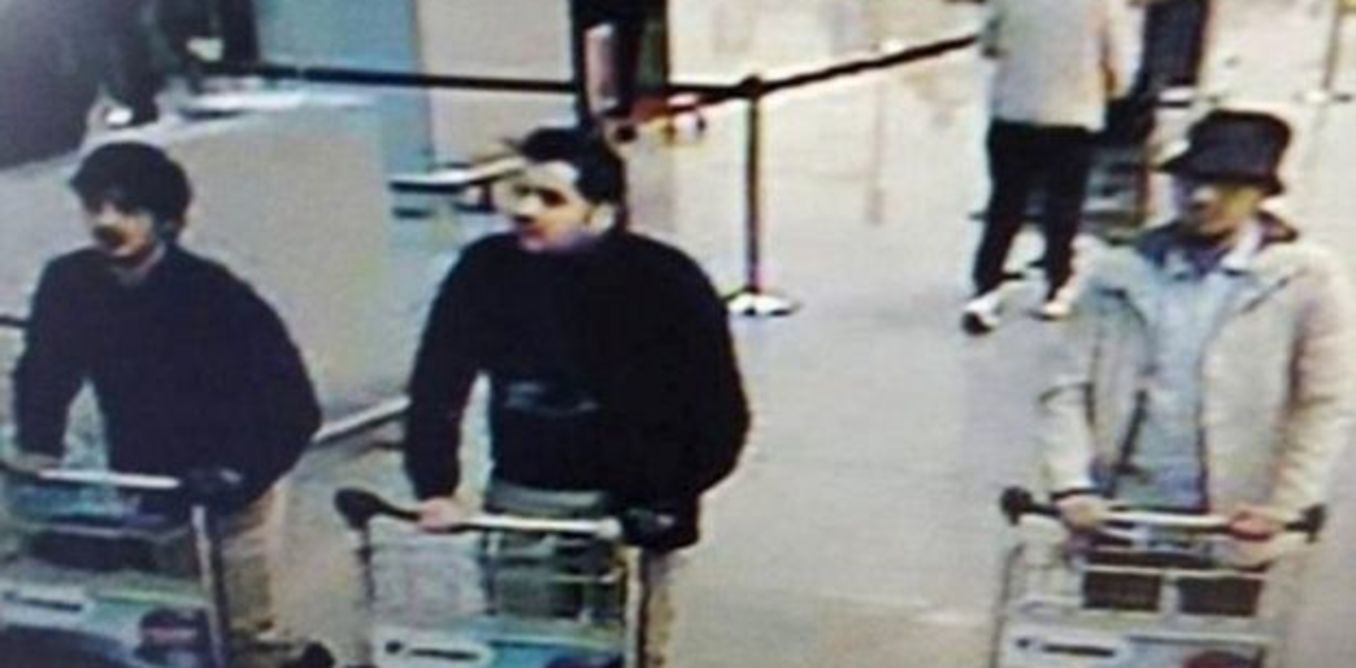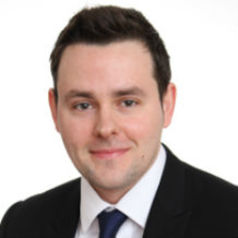In the wake of the terror attacks on Brussels, Belgian police rapidly identified two of the suicide bombers that carried out the attacks: brothers Khalid and Brahim el-Bakraoui, both Belgian nationals. The identification came after the police released CCTV images showing three men at the airport in Zaventem in the hope that people might recognise them and come forward with information.
The search for the third man wearing the white jacket and hat in the CCTV image has become the immediate focus for the massive police operation. He was thought to be carrying the most powerful bomb which failed to go off, prompting him to flee. The unexploded bomb was later safely deactivated by experts.
It is clear the release of images plays a massive role in the manhunt – a taxi driver is said to have come forwards after recognising CCTV images of the three men he earlier dropped off at the airport. But looking at the grainy CCTV footage, it is hard to make out the blurred features of the suspects. So how easy is it to actually identify someone from a CCTV image?

The hunt for the third man involved in the Brussels bombings is underway Belgian Federal Police
You may not have heard of “super recognisers” – people who literally never forget a face. In the UK, the London Metropolitan Police has its own super recogniser squad who have been shown to have extraordinary powers of recall when it comes to identifying people from an image or photo.
Both in policing and at border control, unfamiliar face matching – rather than face memory – is key to successful operation. Super recognisers have been shown to perform significantly better than control groups in a number of tasks related to identification. So could this enhanced ability to spot a face in a crowd be used in the fight against terrorism?
Face off
A group of current Met Police super recognisers were assessed with the Glasgow Face Matching Test (GFMT), a standardised test of unfamiliar face-matching ability. In this task, participants are shown pairs of faces and are asked to determine whether they show the same person or two different people.
The GFMT sounds like a deceptively simple task, show a person two faces and ask whether they show the same individual or two different people. However, the key thing here is that they are unfamiliar faces – and our research has shown that unfamiliar face recognition is hard and highly prone to error.
In fact, error rates in this task for the average person range from 15-20% – and we know from previous findings that even a group of passport officers perform no better, even those with years of experience in matching faces.
So how did the super recognisers do? Well, their performance on the GFMT unfamiliar face-matching task was outstanding, where average error rates in the comparison group – of police trainees – reached 19%, average error rates for the super recognisers fell to just 4%, with one officer reaching perfect levels of performance.
In a second experiment, the demands of the task were increased by replacing the GFMT faces with those of male models. Models often alter their appearance and in this way the authors could test super recogniser’s unfamiliar face-matching performance for faces that varied in appearance to a greater degree. This type of task also mirrors an offender’s change in appearance, using of different hair styles, beards, and clothing.
Once again, the super recognisers outperformed the control group – a group of university students – on the models task, with error rates falling from 27% among the control group to 10% in the super recognisers.
In a third test the super recognisers were presented with a familiar face-matching task using celebrity face images. The photos were all pixelated to mirror a forensic identification situation in which only low-quality CCTV images would be available. The super recognisers again scored significantly fewer errors (7%) compared to the control group (27%).
Facing the facts
These findings provide more evidence for the view that there are wide individual differences in face recognition ability across individuals in the population. And that people’s level of ability appears to be innate – training or years of experience makes little difference to the level of performance.
Across these three experiments using both unfamiliar and familiar faces in both easy and difficult viewing conditions, the Met Police’s super recognisers consistently outperformed the control groups.
The wider recruitment of this special breed of recognisers in other police forces and in agencies such as the passport office and border control – where accurate unfamiliar face matching is vital to the nation’s security – is very important in the fight against terrorism and could go some way to bolstering national security efforts.
Much has been said about Belgium’s security failures in the aftermath of the latest attacks on Brussels. But it isn’t just the Belgians who are struggling to keep a track of the jihadi networks within their country. The latest talks have renewed calls for a European wide intelligence agencythat could share information quickly and easily between countries. Because it is clear that for long as terrorists can cross borders, we need security that can do the same.
 The York FaceVar Lab (www.facevar.com) receive their funding from the European Research Council under the European Union’s Seventh Framework Programme (FP/2007-2013) / ERC Grant Agreement n.323262, and from the Economic and Social Research Council, UK (ES/J022950/1)
The York FaceVar Lab (www.facevar.com) receive their funding from the European Research Council under the European Union’s Seventh Framework Programme (FP/2007-2013) / ERC Grant Agreement n.323262, and from the Economic and Social Research Council, UK (ES/J022950/1)
David James Robertson, Research Fellow @ York FaceVar Lab, University of York
This article was originally published on The Conversation. Read the original article.




 SpaceX Begins IPO Preparations as Wall Street Banks Line Up for Advisory Roles
SpaceX Begins IPO Preparations as Wall Street Banks Line Up for Advisory Roles  Trump Administration Reviews Nvidia H200 Chip Sales to China, Marking Major Shift in U.S. AI Export Policy
Trump Administration Reviews Nvidia H200 Chip Sales to China, Marking Major Shift in U.S. AI Export Policy  Trump Signs Executive Order to Establish National AI Regulation Standard
Trump Signs Executive Order to Establish National AI Regulation Standard  Apple Explores India for iPhone Chip Assembly as Manufacturing Push Accelerates
Apple Explores India for iPhone Chip Assembly as Manufacturing Push Accelerates  MetaX IPO Soars as China’s AI Chip Stocks Ignite Investor Frenzy
MetaX IPO Soars as China’s AI Chip Stocks Ignite Investor Frenzy  SpaceX Insider Share Sale Values Company Near $800 Billion Amid IPO Speculation
SpaceX Insider Share Sale Values Company Near $800 Billion Amid IPO Speculation  Fed Near Neutral Signals Caution Ahead, Shifting Focus to Fixed Income in 2026
Fed Near Neutral Signals Caution Ahead, Shifting Focus to Fixed Income in 2026  SK Hynix Considers U.S. ADR Listing to Boost Shareholder Value Amid Rising AI Chip Demand
SK Hynix Considers U.S. ADR Listing to Boost Shareholder Value Amid Rising AI Chip Demand  Republicans Raise National Security Concerns Over Intel’s Testing of China-Linked Chipmaking Tools
Republicans Raise National Security Concerns Over Intel’s Testing of China-Linked Chipmaking Tools  Jared Isaacman Confirmed as NASA Administrator, Becomes 15th Leader of U.S. Space Agency
Jared Isaacman Confirmed as NASA Administrator, Becomes 15th Leader of U.S. Space Agency 

































